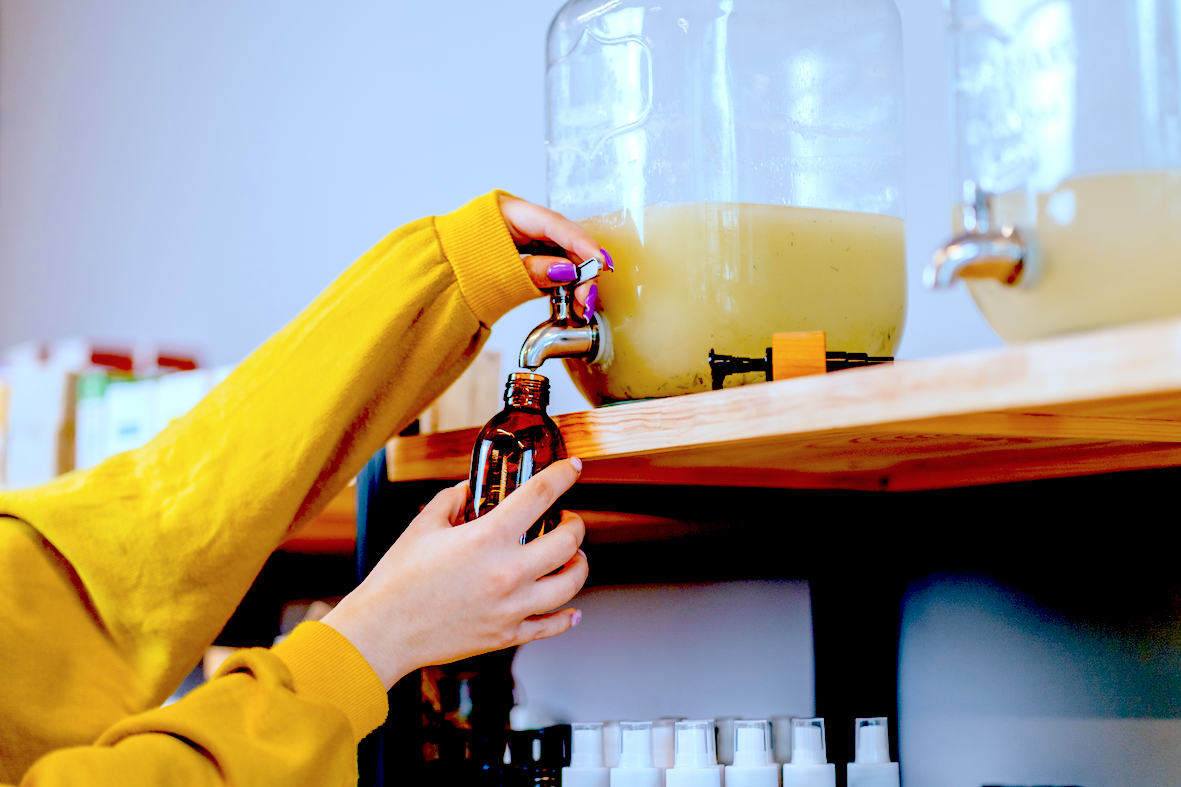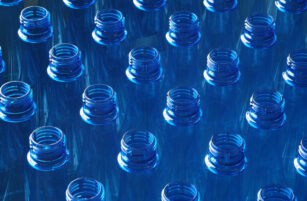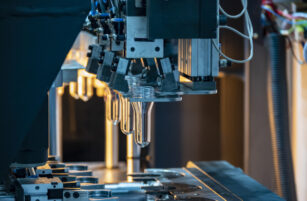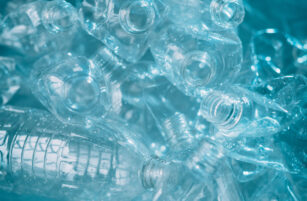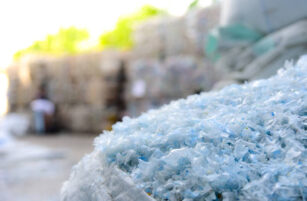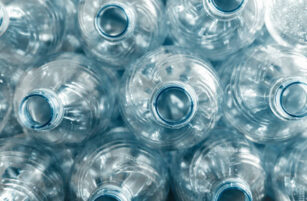Insight Focus
- Design innovation is helping enhance packaging recyclability and promote circularity.
- Improved recyclability may help remedy current shortages of high-quality recycled plastics.
- But can sustainable design also improve plastic’s public image, and slow moves to other materials?
Recent design innovation has highlighted the potential for plastic packaging to re-invent itself and make a positive contribution towards greater sustainability. Product manufacturers are seeking new packaging designs to increase packaging circularity, improve public perception towards plastic packaging, and boost supply of recycled material. The following are five key plastic packaging design trends that are shaping what we buy as consumers.
1. Mono-Materials
Packaging manufacturers are increasingly using a mono-material approach to improve recyclability of packaging.
Often both flexible and rigid packaging for consumer goods consists of mixture of different materials. For example, flexible pouches and Tetra Pak cartons, popular for fresh juices, milk, and homecare applications, typically contain several layers of different material, including a variety of plastics, paperboard, and aluminium foil. However, multi-layer, composite packaging can be difficult to recycle, often ending in landfill or being incinerated.
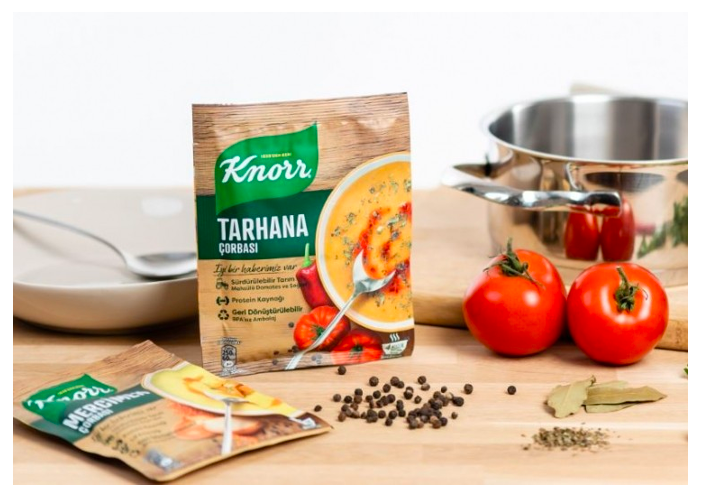
Over recent months, several leading fast-moving consumer goods brands have launched new packaging solutions, replacing composite packaging with a mono-plastic offering, drastically improving their recycling potential.
Unilever is one of the many companies now embracing this trend. Amongst several product examples, Unilever has a long-term aim of replacing hard-to-recycle single-use sachets with mono-material plastic sachets that are more recyclable.
Unilever has previously introduced mono-material sachets in Japan for haircare products, in Vietnam for shampoo, and in Turkey for soup powder.
2. Refillable Plastic Containers
Whilst anti-plastic sentiment has led certain consumer groups to shift away from plastics and hard-to recycle packaging, other brands and companies have introduced new refillable systems, which reduce plastic consumption whilst maintaining quality and product performance.

Aussie haircare and Ecover laundry products typify this trend, offering customers the opportunity to buy their products as they would any other brand, only refilling them once empty from stations in shops or from lightweight cartons.
Elsewhere, in February 2022, the Coca-Cola Company announced a new goal to have at least 25% of all beverages globally across its portfolio sold in refillable/returnable glass or plastic bottles, or in refillable containers through traditional fountain or Coca-Cola Freestyle dispensers by 2030.

Other examples can be found in our recent article.
3. Colourless Packaging to Boost Recycling
In the UK, consumers often refer to milk by the colour of the cap. Red, green, and blue have become synonymous with skimmed, semi, and whole milk, but this could soon change.
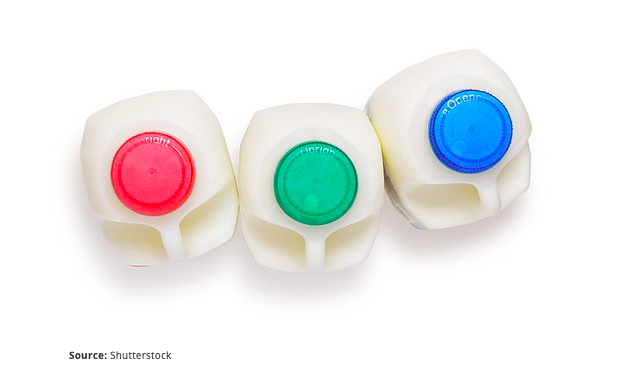
As it stands, milk bottle caps are hard to recycle due to their diversity of colours. Coloured milk caps cannot be recycled back into food grade plastic, whereas clear caps can be. Supermarket chain, Waitrose, has announced that it’ll be replacing all milk carton caps with clear caps from spring.

This innovation is interesting as it doesn’t alter the amount of plastic that goes into the product or drastically impact the consumer experience. It simply improves the ease of recyclability.
This follows moves by certain soft-drinks brands, including Sprite and 7UP, in recent years to ditch coloured bottles in favour of clear, colourless versions. Britvic’s move to colourless bottles across its 7UP drinks range was supported by research that found that 40% of consumers would be more likely to recycle 7Up in a clear bottle.
4. Tethered Caps
According to European Commission study, around 90% of all single-use plastics (SUP) found on European beaches consist of just 10 different types of items. Drinks bottle caps and lids made up 3% of the total SUP waste found on beaches in this study.
As a result, the EU decided to target these specific items in its SUP directive, and as part of that directive, tethered caps will be mandatory in the EU by 2024.

A tethered cap is a bottle cap with an additional piece of plastic that holds the cap to the bottle, the design is focused on reducing plastic pollution and increasing the likelihood that bottle caps end up in recycling.
Following a trial of tethered caps on bottles in Spain last year, Coca-Cola is now in the process of a gradual changeover to new caps on all single-use PET bottles in Germany.
Caps on most carbonated soft-drinks bottles are made from high-density polyethylene (HDPE). During the recycling process, they are detached from the necks of the bottles, collected, and used for new products.
In redesigning for the new tethered cap, Coca-Cola has also optimised the overall bottle design with expected weight savings of up to 1.37 g of plastic per bottle in total in Germany (an average 500 ml carbonated soft-drink-bottle in Europe weighs around 20g).
5. Design Consolidation: The One-Piece Meat Tray
Another approach to reducing packaging waste, as well as overall weight, is through the consolidation of design components into a single optimised product.
Recently, a Swansea University student designed a plastic meat tray consisting of a single plastic component, removing the need for the traditional absorbent padding that would lie underneath the meat of fish.
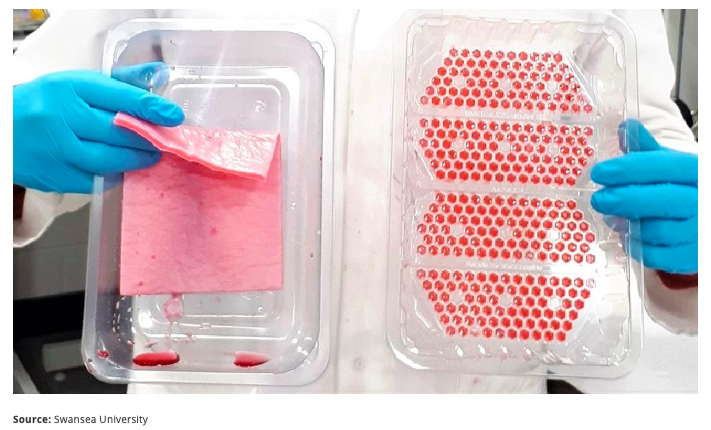
The tray uses a system of specially designed wells that absorb the juices and don’t let them leak until being washed, ready to recycle.
Unlike previous renditions, the whole tray system is designed to be recycled. The product is already being used in UK supermarket chains, Sainsbury’s and Asda.
Why These Changes Matter
Recycled plastic in huge demand amid sky-rocketing prices. However, ample supply of high-quality recyclate is a major challenge at present.
Design innovations that help boost recyclability and promote circularity within the plastic economy are a win-win for environmental sustainability and the procurement of recycled plastic.
SUP is widely seen as environmentally problematic. In response, many products have switched to non-plastic alternatives, such as paper bottles. However, these alternatives often come with their own drawbacks, including higher carbon footprints or recyclability issues.
Clearer messaging as to the reasons behind the design changes and the recyclability of containers could also improve the public perception of plastic packaging.
Design innovation is playing a critical role in enabling plastic packaging to remain relevant with consumers, whilst improving product performance and overall sustainability.
Other Insights That May Interest You…
Plastics and Sustainability Trends in March 2022
United Nations Agrees to Fight Plastic Waste in Historic Summit
Plastics and Sustainability Trends in February 2022
Plastics and Sustainability Trends in January 2022
Explainers That May Interest You…
